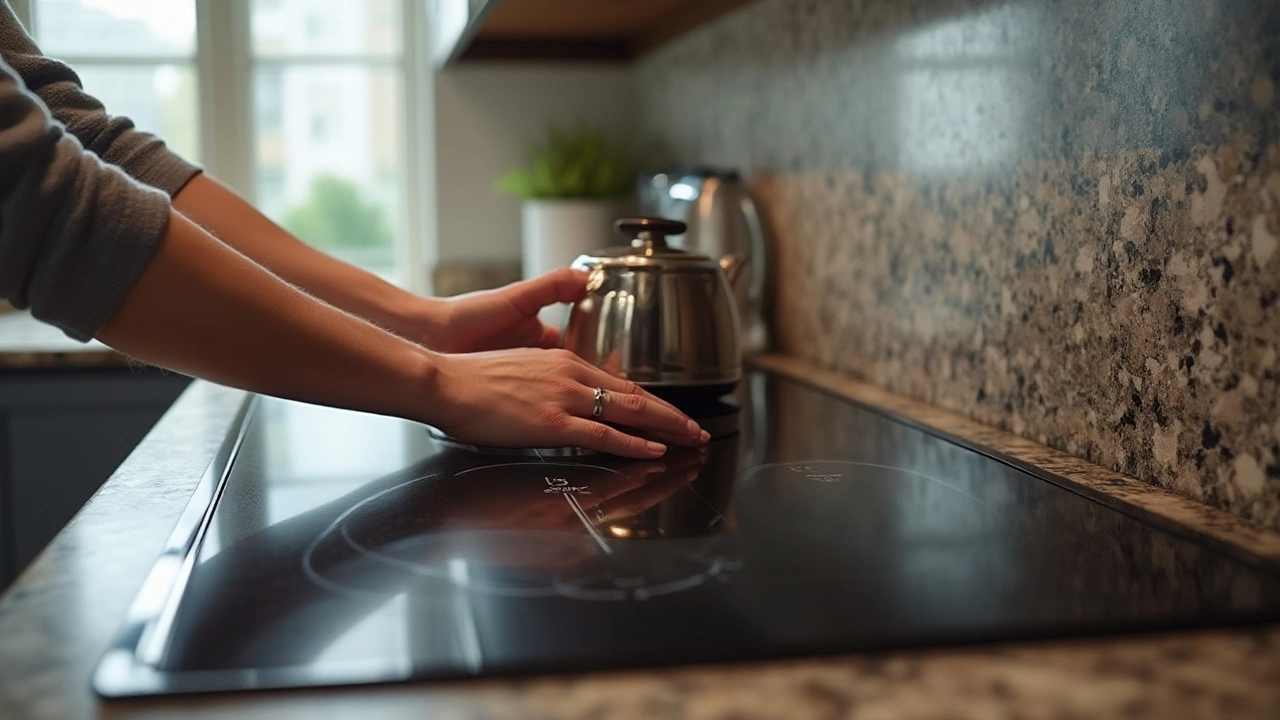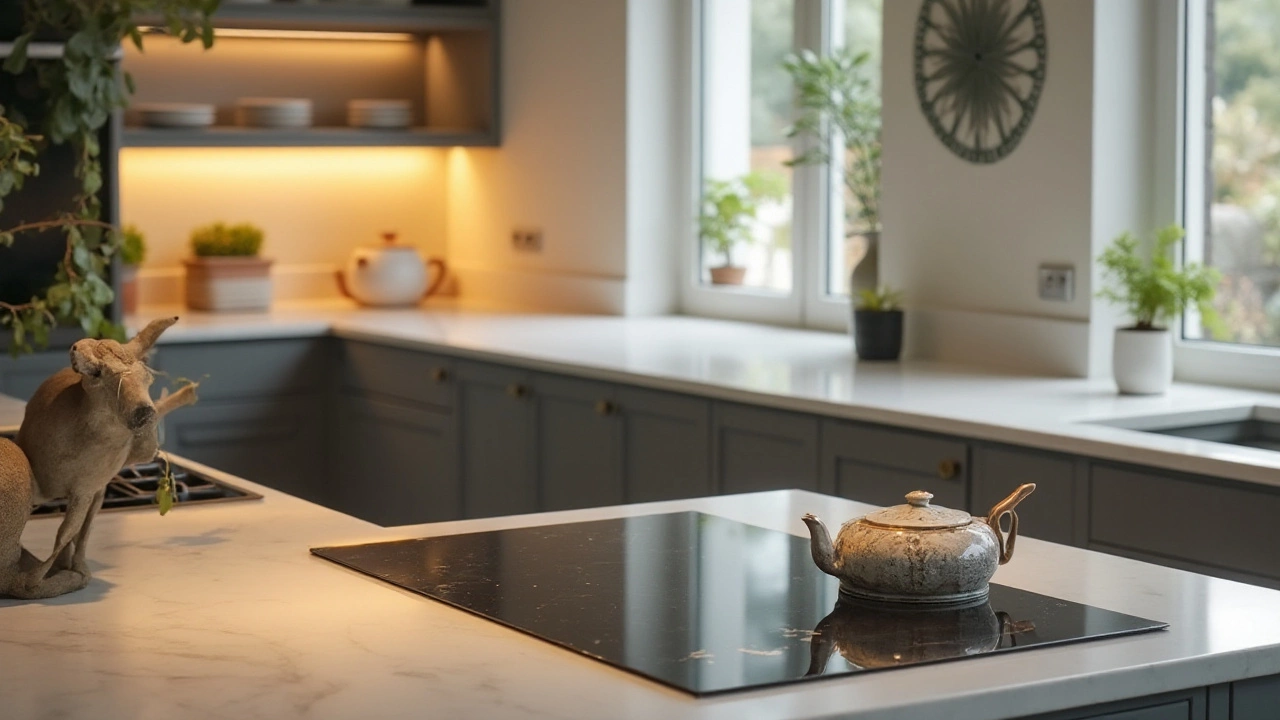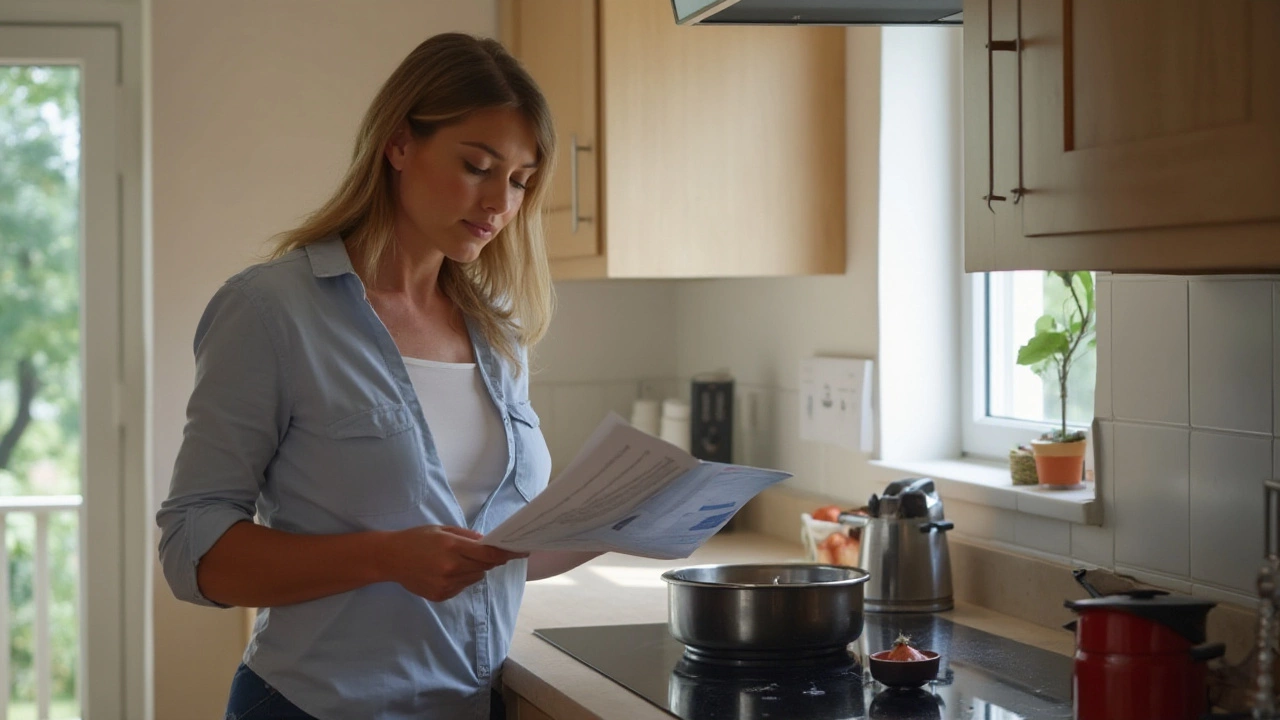
- 30 Oct 2024
- Gideon Thornton
- 0
The sudden silence of an electric hob can be unnerving, especially when dinner is on a deadline. Before reaching out for takeout menus, let's explore some straightforward solutions that might just bring your hob back to life. Electricity flows through your hob as the essence of its functionality. Yet, even a slight disturbance can threaten that connection. In these moments, it is essential to have a plan of action that doesn't immediately lead to dialing for professional help.
Sometimes, it's the simplest oversight that causes the greatest inconvenience. From ill-fitted plugs to invisible blown fuses, there lurk several sneaky culprits behind a malfunctioning hob. Checking these first can save time, effort, and potentially the cost of an unnecessary service call. Let's get down to the core of the problem as you journey through assessing and fixing your electric hob, ensuring you’re equipped to handle whatever issue it may throw your way.
- Initial Checks and Safety Precautions
- Examining Power Supply Problems
- Common Hob Malfunctions
- DIY Repair Tips and When to Call a Professional
Initial Checks and Safety Precautions
When your electric hob suddenly refuses to heat up as expected, it’s easy to spiral into panic mode. But before doing anything else, start with the basics that can often be overlooked in the heat of the moment — quite literally. Begin by ensuring the hob is properly plugged into the outlet. It’s a common fact that household appliances, including hobs, can become accidentally unplugged during cleaning or kitchen exuberance. Inspect the socket as well, keeping an eye out for any visible damage or signs of burning, which could indicate faulty wiring.
Safety should always be your top priority. Whenever you are dealing with electrical appliances, fundamental precautions must be taken into account. Before touching or inspecting any part of your hob, ensure that it is entirely switched off and unplugged from the mains. This simple step can prevent the risk of electric shock. Keep in mind that water and electricity don’t mix — so make sure that the surrounding area, as well as your hands, are dry when handling electrical components.
Next, examine your power supply. Many times, the issue might not reside within the hob itself but in the circuitry that feeds it. Try testing the outlet with another appliance that you know is working. In cases where the hob is wired directly into a circuit, check your fuse box or circuit breaker. If a switch has tripped or a fuse blown, this will need to be addressed. A table of typical household circuit breaker capacities might be useful here:
| Circuit Type | Capacity |
|---|---|
| Kitchens | 20-30 Amperes |
| Living Areas | 15 Amperes |
| Large Appliances | 30-50 Amperes |
Renowned author and home repair expert Mike Holmes once remarked,
"Most home appliance problems arise when people forget the basics of maintenance and checks they can do themselves."His insight serves as a reminder of the significance of fundamental upkeep. Regular checks ensure that your electric hob is not only functioning properly but doing so safely.
Even if these steps don’t immediately resolve the issue, they’ll provide a solid foundation for deeper troubleshooting and can often identify the primary cause. From frayed cords to loose connections, a quick visual inspection can reveal potential hazards lying beneath the surface. This will not only help restore your hob to working order but will also ensure your family’s safety. So, tackle each step with diligence and patience, treating it as a valuable learning experience in maintaining your household appliances effectively.
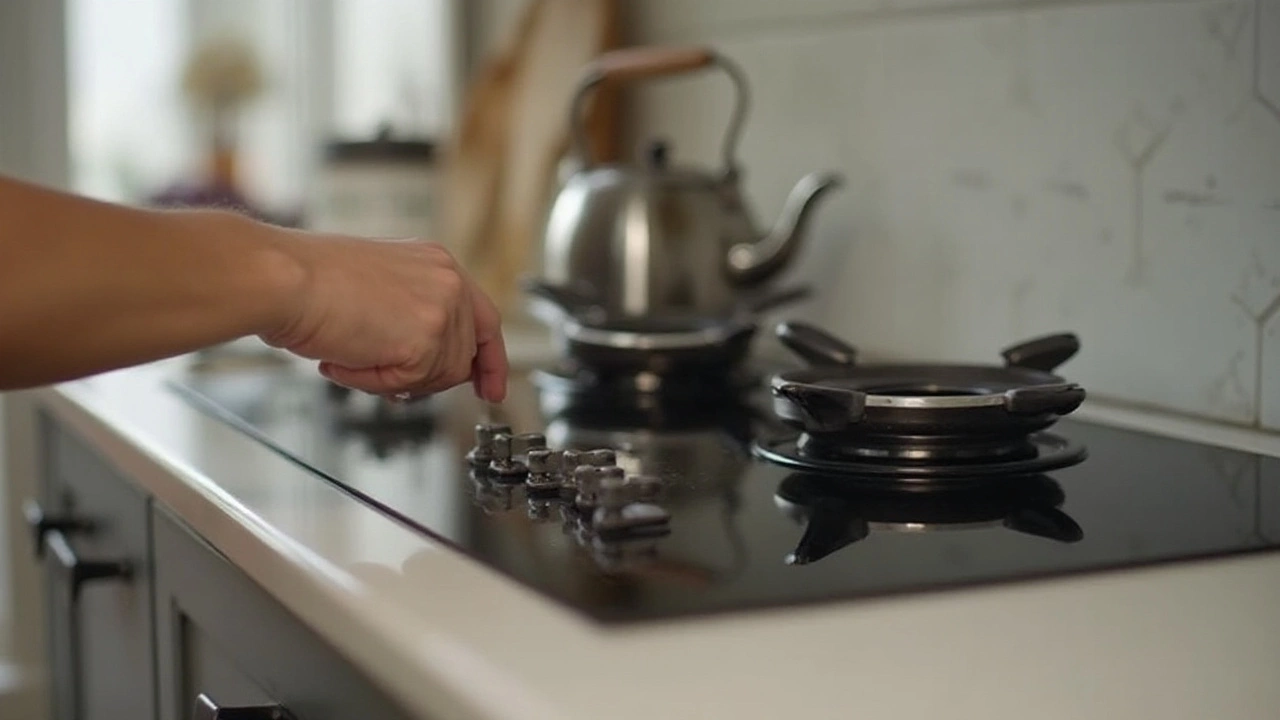
Examining Power Supply Problems
When your electric hob appears to have given up without a whisper, the first arena to investigate is the power supply. It's a bit like being a detective with DIY skills, and this line of inquiry typically begins at the wall. Ensure that the hob is plugged in securely, as even a slight movement could disconnect it from the power source. Inspect the cord for any signs of wear or damage because a frayed or cut cable can disrupt the flow of energy. Sometimes, problems aren’t evident just on the surface, especially with internal wiring. Remember, it’s always best to ensure appliances are switched off before you start tinkering around.
Next, head over to the fuse box. Sometimes, the circuit breaker trips due to an overload, leaving you scratching your head about your non-responsive hob. Flick the switch back to its ON position and see if that does the magic. Here’s an interesting tidbit: across many households, particularly older ones, it’s not unusual to find hobs and ovens sharing a circuit. This setup can often cause little surprises in the kitchen, so it's something to be aware of. If your breaker trips frequently, you might want to consider bringing in an electrician to evaluate your home's wiring setup.
“Ensuring a reliable power supply not only enhances an appliance's efficiency but also extends its longevity. Regular maintenance can prevent most hiccups you encounter, allowing your kitchen tools to serve you longer.” — Home Appliance Expert
Let's not ignore the humble plug. It’s worth trying another appliance in the same socket if you suspect there may be an issue. Or, pop the hob’s plug into another outlet, just to rule out socket failure. These small steps can often pinpoint the culprit without delving into more complex terrain. If after toggling and changing nothing seems to resuscitate your hob, the issue might lie deeper within the wiring itself or the hob's internal circuitry. This level of problem often requires a little bit more technical knowledge to fix but knowing where the fault is means you’re halfway to solving it.
Checking for Blown Fuses
Another player in the power drama is the fuse. Different countries might have different setups, but typically, a hob’s plug may include a fuse of around 13 amps. A blown fuse can often be the perpetrator if your hob won't heat up. You’ll need to carefully open the plug and replace this small piece if it looks blackened or broken. Be gentle: these components are crucial to your appliance's functionality and also play a pivotal role in safeguarding your home against electrical fires. In fact, statistical data indicates that about 25% of kitchen electrical failures are due to faulty fuses. This small, yet mighty element can be the difference between an evening spent leisurely cooking and rushing towards the phone to summon a technician.
Adopting a methodical approach to fix electric hob issues starts with having the patience to explore each possible lead. Your goal should be to find the most seamless route to getting back to creating delicious meals, equipped with the confidence that you can handle minor interruptions with ease. Keeping track of how your appliances respond each time the breaker trips, the fuse blows, or the plug plays tricks is invaluable. So next time you encounter a non-working hob, remember: there's no technology or mystery behind an honest investigation into the power supply.
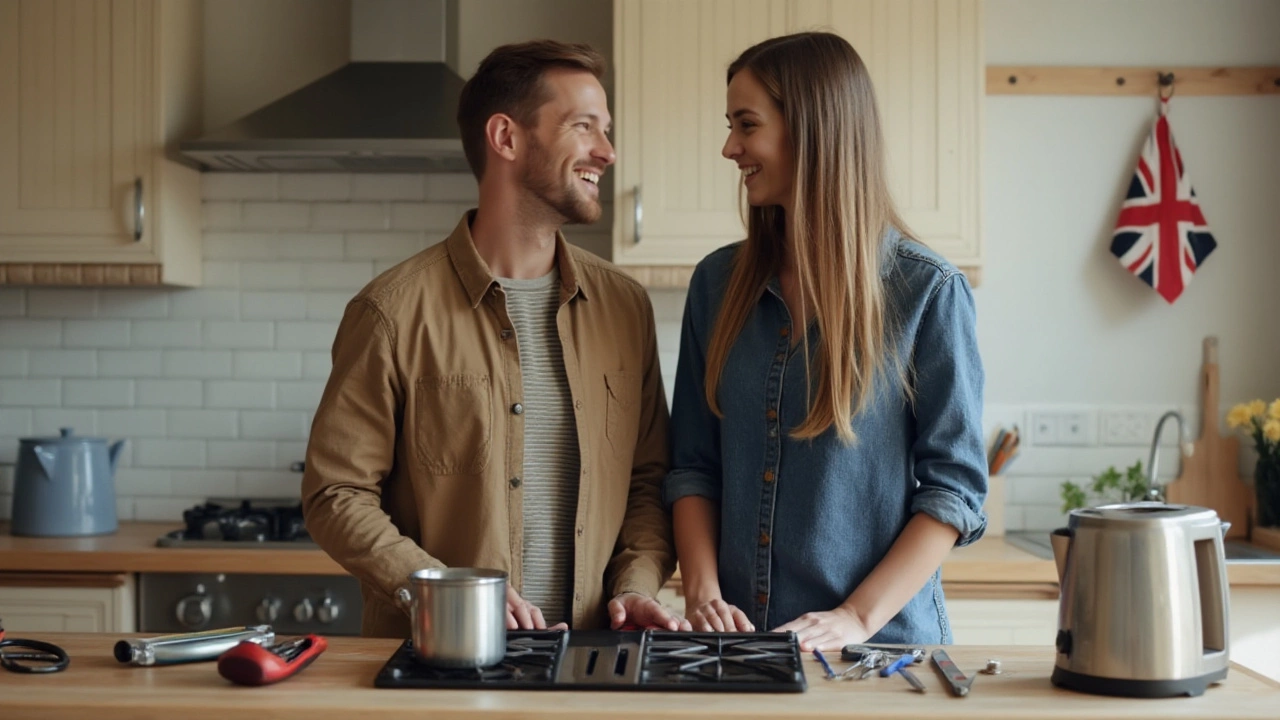
Common Hob Malfunctions
When your electric hob decides not to cooperate, it often means you're faced with one of several typical issues. Among the most common problems are those associated with the hob not heating up, or perhaps heating unevenly. It's a frustrating experience, especially when your perfectly seasoned steak refuses to sear, or that pot of water isn't boiling as it should. Many owners have found that faulty internal wiring, or sometimes even a simple loose connection, could lead to such symptoms. In some cases, dirt or grease build-up could also obstruct the sensors, leaving the hob acting up like a tepid dinner guest.
Another frequent malfunction involves the hob's control panel. Touch controls can become unresponsive due to a calibration error or even excessive moisture. When these sleek-surfaced controls stop highlighting as they should, it's like attempting to press the world’s most stubborn elevator button. In such scenarios, patience is key while trying basic resets before considering more intensive troubleshooting. Occasionally, you may encounter a hob that's consistently tripping the circuit breaker, which could point towards an issue with the unit’s electrical components. It is crucial in such situations to rule out any external factors, such as a fault in the circuit box itself or other kitchen appliances causing an overload.
Occasionally, you might find yourself dealing with the issue of inconsistent temperatures across the hob’s zones. This tends to surface when a particular zone doesn’t get as hot as the others, or sometimes cuts off unexpectedly mid-cooking. Often, this can be attributed to the hob’s heating elements, or an internal thermistor failing to deliver accurate temperature readings. Such issues are more prevalent in hobs used constantly at high temperatures without proper cooldown breaks, hinting at the need for occasional rest. A surprising aspect of modern electric hob troubleshooting is the role of software. New models often come with integrated smart tech, meaning a firmware glitch could wreak havoc on an otherwise fine-tuned cooking session.
These common faults might sound daunting, but don’t despair. With a little guidance, the mystery of a malfunctioning hob can usually be unraveled quite swiftly. As suggested by renowned appliance expert, Dean Adams,
“In many cases, addressing hob problems boils down to a simple deductive process.”Remember, no one starts out knowing everything about these modern culinary wonders, but each challenge presents an opportunity to understand them better. If you encounter any part replacements suggested by the user manual, it’s often best to reach out to professionals unless you’re confident in your DIY prowess, ensuring your hob continues to function safely and efficiently.

DIY Repair Tips and When to Call a Professional
When faced with a silent electric hob, the notion of getting your hands a little dirty might seem appealing and frankly quite rewarding. However, it's crucial to tread carefully as we delve into the mechanics of your hob. Initial attempts can be surprisingly effective, letting you fix the problem without the stress and expense of a professional. Start by ensuring the power is off for safety -- no one wants a shock from the stove that's meant to heat dinner, not you. Once safe, check the power cord and plug for any signs of damage or loose connections. Even a slightly bent prong can interrupt the flow of electricity, leaving your hob lifeless.
If the cord looks intact, you might turn your attention to the control knobs. Sometimes grime or spilled food can cause them to get stuck or not engage properly. Carefully cleaning around and beneath them can lead to a miraculous restart. Don't forget to inspect the heating elements themselves, which, though not visibly damaged, can at times suffer from poor connections. If these elements aren't heating, try swapping them with another functioning element to test if the problem lies with the element or something deeper in the device. Electric hob troubleshooting can often be a simple case of elimination.
When to Call in the Pros
Despite best efforts, there are moments when even a determined DIY enthusiast must recognize the limits of their prowess. Electrical components beyond heating elements involve intricate workings that demand professional oversight. This is where calling in the cavalry is not only wise but also a safe decision. Complex circuit issues or mysterious dead zones on your electric hob spell the need for someone with specialized tools and training. As a statistic to consider, only about 35% of appliance technical malfunctions reported are resolved without professional intervention. So while the odds aren't disheartening, they underline when expertise is invaluable.
Avoid the temptation to go deeper into the workings without requisite knowledge. Electronics inside hobs often include sensitive parts like motherboards which, if tampered with, could lead to irreparable harm or voided warranties. As a wise person once said, "Knowing when to stop is as crucial as knowing when to start." Remember, your safety and appliance's longevity are paramount. While solving issues through DIY is delightful, reaching out to an appliance repair expert ensures your hob is in working order swiftly and safely, allowing you to return to culinary bliss with peace of mind.


